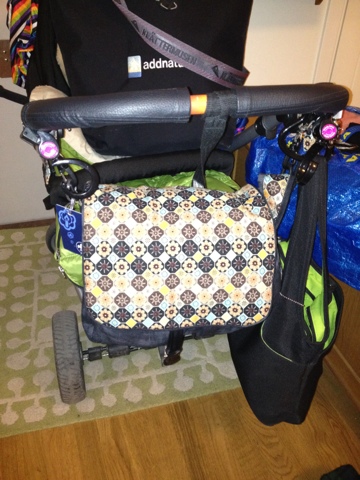
I've seen a few swaps organised online for fabric squares to make an I-Spy quilt. I really want to make my son an I-Spy quilt, and I really don't want to buy the minimum cut of all the different fabrics I'll need! I haven't managed to find any swaps that are a) open now, or b) open to non-US residents, so I thought I'd organise my own.
UPDATE: Our swap is now full. I can't wait to see what everyone sends in!
If you are interested in doing an I-spy swap, post your email address in the comments field, or send me a private email. If we get enough people interested, I will organise another swap.
What's an I-Spy quilt?
An I-Spy quilt is a patchwork with many different fabrics showing many different objects. Kids can be given a list or small cards naming everything on the quilt. They then search the quilt to find the different items. They are great for keeping kids entertained: outdoors, in the car, or anywhere really.
Fabric
What's this?
So here it is: an international swap for I-Spy charm squares (12,5 cm or 5 inch squares), open for sign up as of 1 April 2012. Fabric to be posted to arrive in Sweden no later than 15 May 2012. I'll get them all back in the post by 31 May. When you get it will depend on where you are.
This swap is for I-Spy fabrics, that means small images of things that a child can name. Things like cats, strawberies, playing cards, ladybirds, dinosaurs, soccer balls, drums, frogs, pirates, dragonflies, boats, suitcases, fairies, zebras, buses, etc etc.
The images also need to be small enough that every square you send has the item in an identifiable form. It's no good sending a fabric that has a big image, so one square has the head, and the other squares all have abstract looking back legs. So please send small prints that look good on a charm square.
No solids, dots, or abstract patterns. Floral prints are no good, specific flowers are ok - such as "daisies" or "tulips" (but not too many so avoid if you can).
Please: no licensed images (sports teams, Disney characters, etc).
The fabrics should be good quality cotton patchwork fabric, new, unwashed, from a smoke-free home.
Format and number
Each fabric square you send in should be 12,5 cm (5 inches) square. Please be very careful when cutting to ensure that your pieces are this size. There are good instructions for cutting charm squares on Elizabeth Hartman's blog post here. You will need 16 charm squares from each of 5 fabrics. If you're really careful, you should be able to get that from 25 cm full width, or from a fat quarter. If in doubt, buy extra to be on the safe side!
So you send me 80 squares and you will get back 80 squares; 5 of which you sent, the other 75 new! (I know you ought to be able to keep your own fabrics, but then I have to keep track of who sent what, so it'll be way easier for me if you send me all 16 pieces, and you'll get back squares of the fabric you sent in as well.)
If you can group your fabric, that would be appreciated. Place one of each of your five fabrics in a small pile together, before bundling them all up to post to me.
Packaging and payment
Put all your charm squares into a small plastic bag (eg ziploc), together with a card showing your name, email address and postal address. Please type all names and addresses, no hand written cards! Post it to the address I will email to you with acceptance of your sign-up to the swap.
Then pay for your return postage into my Paypal account. Details will also be in your acceptance email.
UPDATE:Postage to addresses in Sweden will cost 50 SEK. Anywhere else in the world: 90 SEK (roughly 10.5 EUR or 13.5 USD.) This includes a padded envelope that I will buy. If you take more than one slot, you can get up to three sets of 80 charms into the same envelope, same postage cost.
Sign-up
This swap is now full, and it is not possible to sign up. If you are interested in doing an I-spy swap, post your email address in the comments field, or send me a private email. If we get enough people interested, I will organise another swap.

























